Blog
13 Kanban Board Examples for 202204 Aug 2022
Whether you're managing a team, are a part of one, or lead the life of a freelancer, or all of the above, we suspect you're answering questions about your work and project status all the time, aren't you? Would it not be clever to apply such a method of task processing, which would present each project element's status automatically? That method is Kanban!

What's Kanban?
Kanban is a visual, intuitive way to organize and track work: you define your work completion stages as columns of the Kanban board, e.g., simply as: to do - doing - done; and create Kanban task cards: one thing to do per card. Then you simply drag the item you're working on from "to do" to "doing", and through that, you're always able to tell the stage of completion for each work item. Of course, this is just a basic example, and most team kanban boards use many more columns than this.
A comprehensive Kanban board will also support swimlanes: rows spanning across all of the stages, letting you manage several similar projects (topics, clients, problems, team members, etc.) on one board.
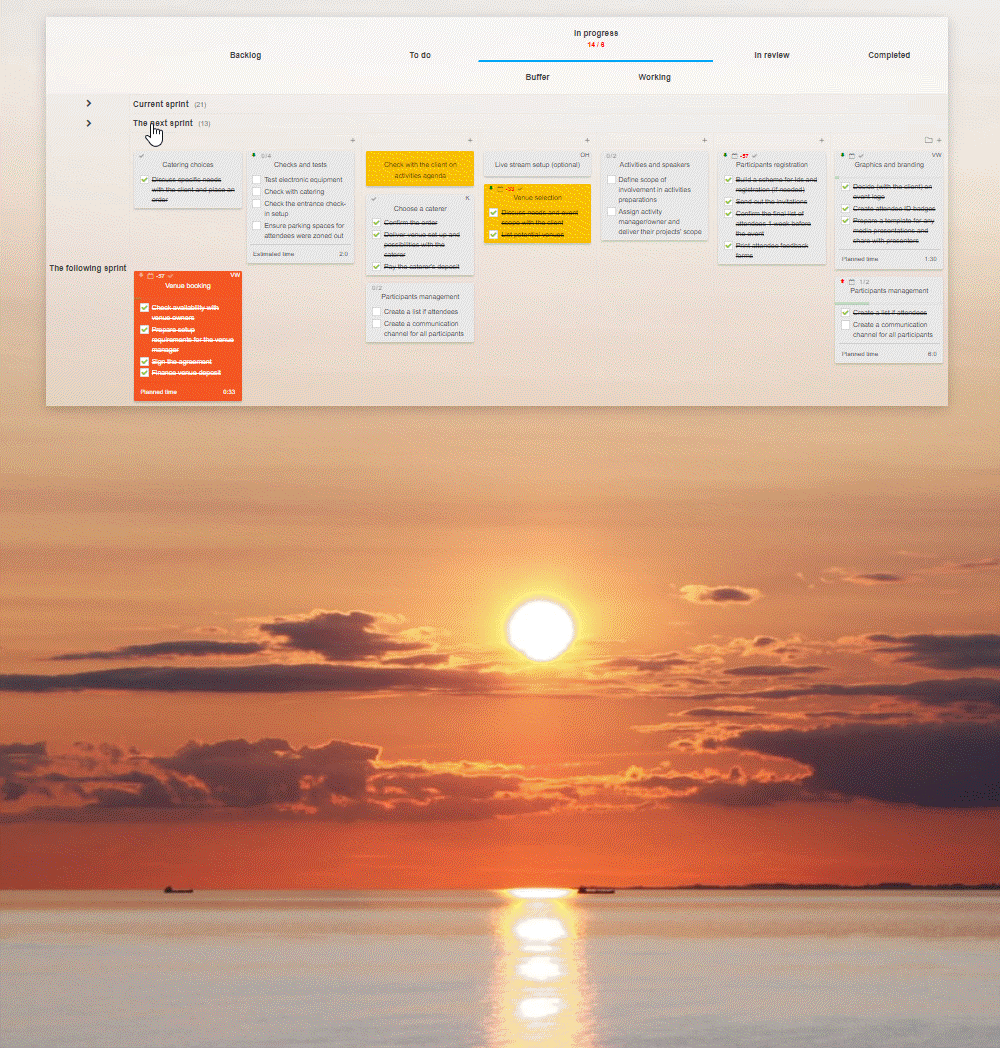
Besides the clear process visualization, another element of Kanban is limiting the number of tasks in progress at any time - it's called a WIP limit. The idea is to decide how many items can be moved to a given stage at once. By doing that, you're minimizing multi-tasking and enforcing more regular tasks completion, opposing starting work on all items at once and dragging out the completion date for all of them.
Why does Kanban work so well?
Kanban can do wonders for teamwork management thanks to its simple and visual nature. It doesn't require much prep work, nor does it ask you to change the way you work too much. The action of moving tasks through the processing stages is intuitive, informative for other team members, and highly satisfying - especially when moving tasks do "Done"!
Applying WIP limits asks the team to complete the started work elements before pulling new cards. That means more manageable, predictable, and calculable completion rates. Furthermore, by visualizing all process stages, when items begin to pile up under a given column, it becomes a clear indication of a problem at that work stage. Perhaps there aren't enough people working at that step, or maybe the tasks reach them incomplete? Whatever the reason, with a Kanban board, the manager can immediately tell that there is a problem there to investigate.
Tracking how fast cards progress through the board from one week to the next is a good indicator of how well the team is doing. By adding detailed information to cards, you can measure what types of tasks take the longest, which require the most communication, which tend to block the system, etc. Treating this information as an improvement opportunity gives you a good chance of smoothing out the process and putting in place measures aiding with problematic tasks, achieving an overall better process flow.
13+ Most Popular Kanban Board Examples:

1. Team project management
That would be a standard, general board for a team working on one or more projects. It shows the state of each work item along the process flow, letting everyone know who is responsible for what task and how long they've been working on each item. The board is also the place for the team to communicate and share files.
A typical columns setup would follow this pattern:
- Backlog
- Scheduled
- Working
- Next
- Doing
- Review
- Rework
- Signed-off
- Done
- Feedback
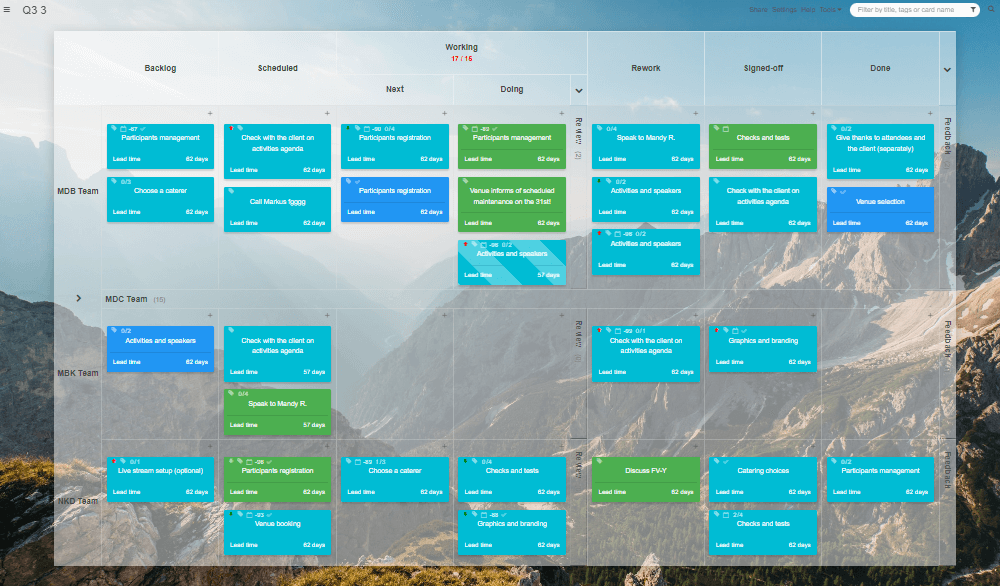
Using swimlanes will allow the team a bird's eye view of all started projects, seeing where more resources are needed, and when specific projects are expected to complete.
2. Product or software development
A product development flow will be similar to the general project management layout but with extra verification steps, allowing the team to catch any problems before they make it too far into the process. To minimize the need to spot when specific tasks require a team member's input, it's common to add automation rules, alerting a set person to review or check a newly prepared work.
A product development board may use columns like:
- Requirements gathering
- Requirements analysis
- In development
- Waiting
- Working on
- Quality assurance
- Waiting
- Working on
- Final verification
- Waiting
- Working on
- Done
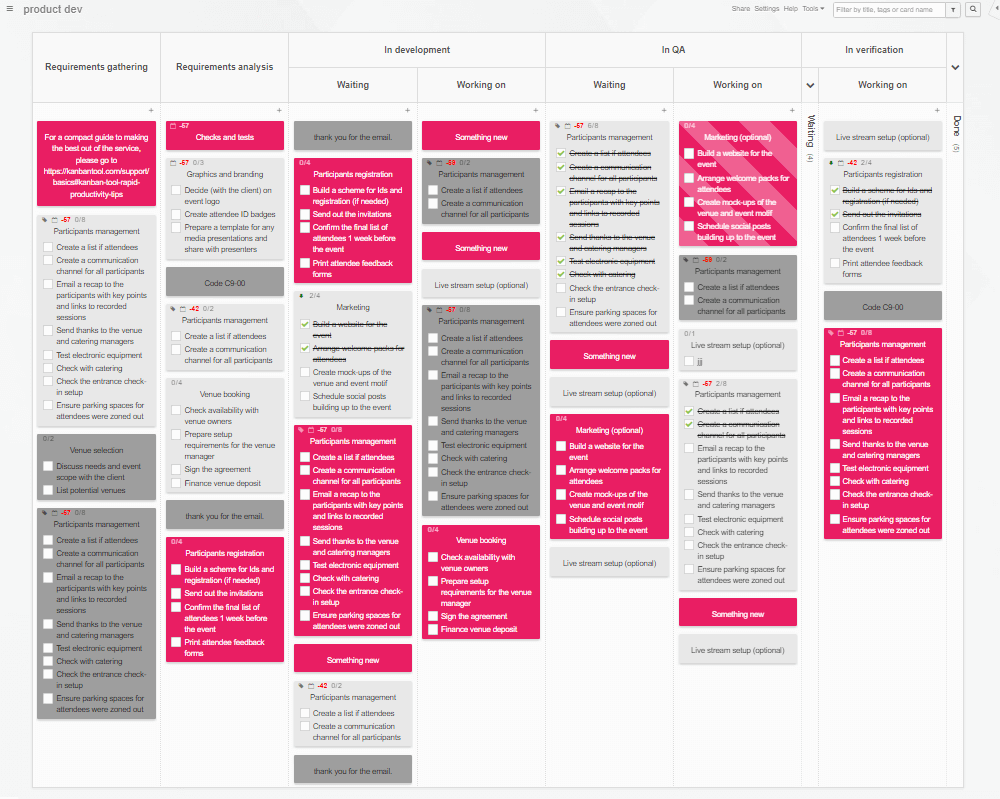
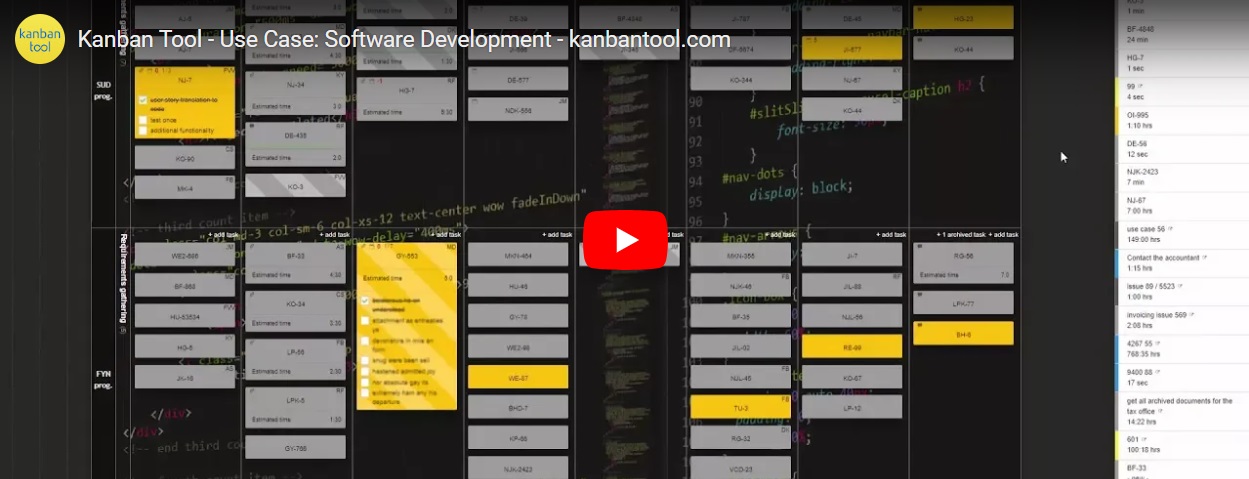
3. Sales pipeline
Managing a sales process benefits from the visual aspect of Kanban in a way more poignant than any other. That's because you get to see the sales funnel in front of you as you manage inquiries and follow up on them. Another great benefit of processing sales on a Kanban board is being able to plan and manage when to contact whom, forgetting nothing, and making sure you're exhausting all potential leads.
A simple sales pipeline process could look like this:
- Leads
- Opportunities
- Initial communication
- Follow-up
- Last chance follow-up
- Proposal
- Solution verification
- Negotiation
- Closed deals
- Lost
- Won
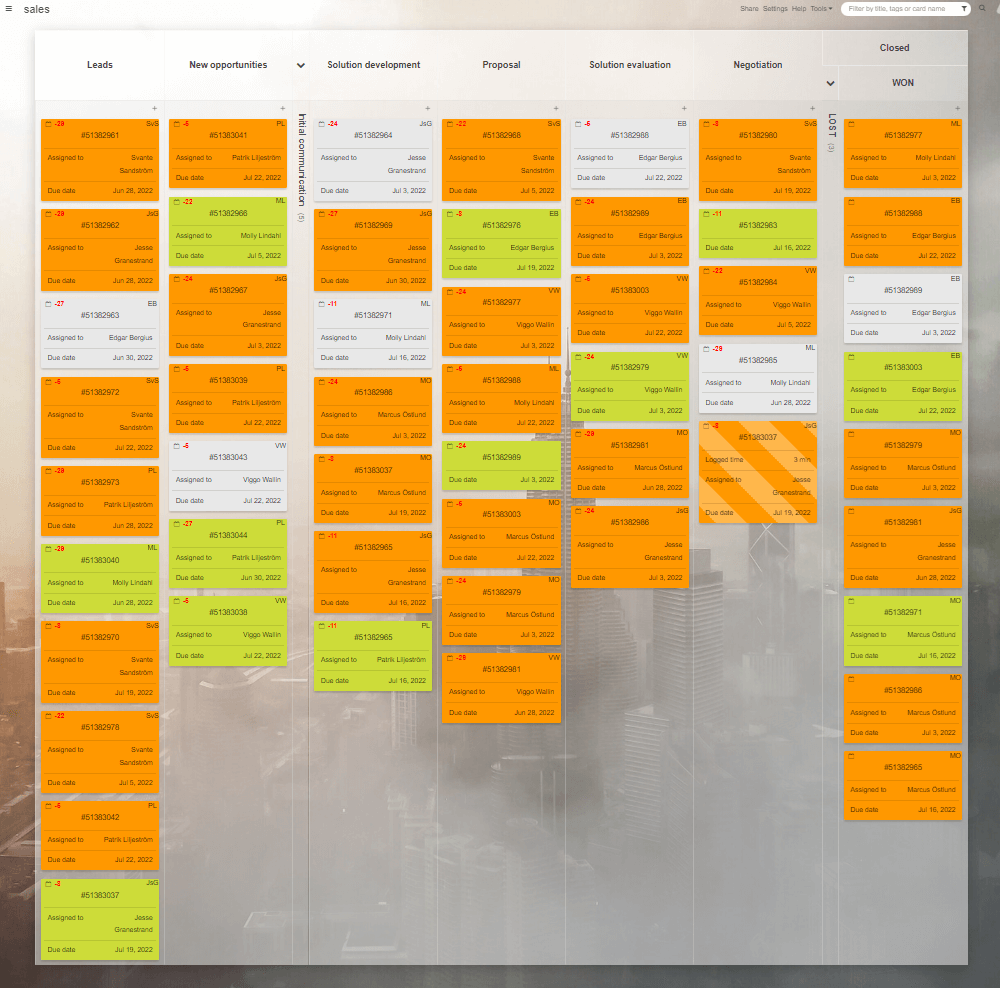
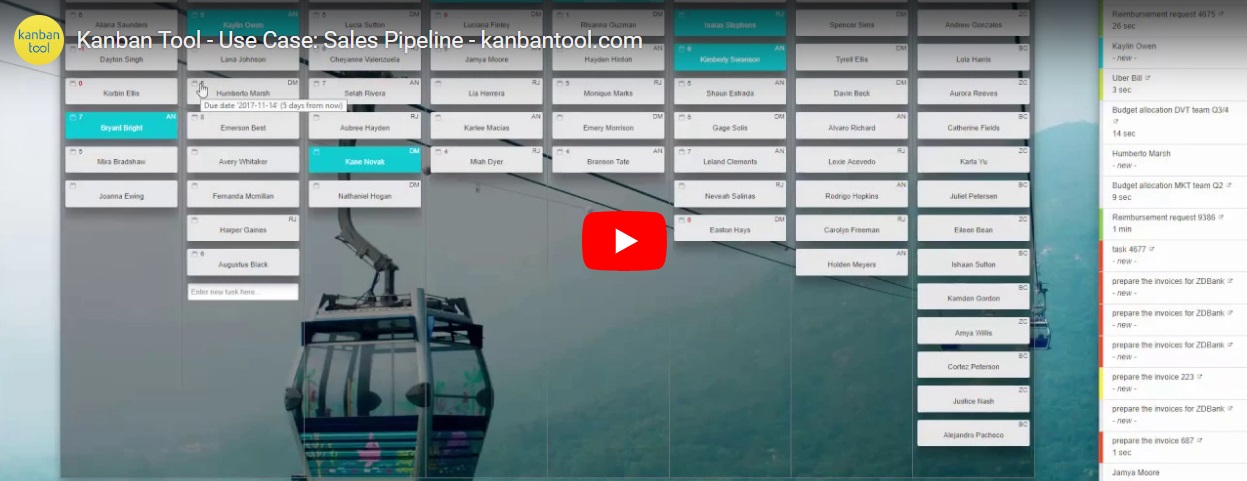
4. Human resources
The process of managing a team - their contracts, time off, expenses tracking, and so on deserves at least an entire Kanban board itself. When you add to it the time-consuming and tricky work of hiring new people and completing finished position contracts, you'll realize just how much work this entails. Visually tracking all HR matters adds clarity and lets the people management team focus on what's most important - on the team, rather than just paperwork. A Kanban board saves their time and keeps tabs on all upcoming performance reviews, leaves of absence, and more. Smaller teams can even share the HR board with the managed team to simplify communication and planning.
An example of human resources management Kanban could use columns such as:
- Info
- To do
- Scheduled
- Doing
- Done
- Feedback
And for swimlanes or card types, you could use:
- Employee information
- Open positions
- New hires onboarding
- Time sheets
- Expenses
- Time off
- Payroll
- Performance reviews
- Training
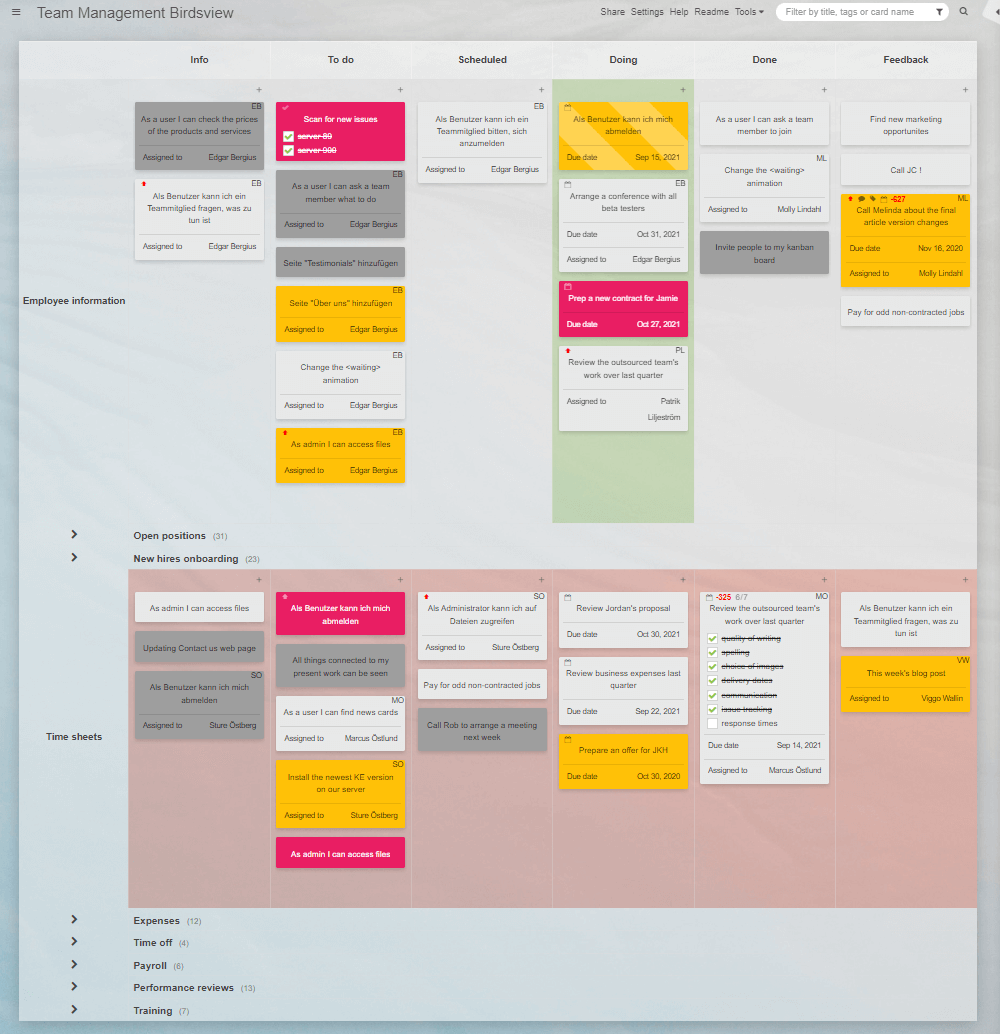

5. Finance department's flow
If knowledge-work Kanban grew out of software development, where details matter a lot, it must be just as good for your finance department's work, where small mistakes are costly. A team processing all company expenses and incomes will also need a reliable way to manage their repeating and one-off tasks. For the first ones, we recommend Recurring Tasks, making sure you don't miss any of your monthly or 3-monthly jobs. Bills, invoices, and other expenses information can be attached directly to cards or connected over a URL link, either from your company's online drive or Google Sheets. However you organize the board or boards, your accountants will be grateful for the highly visual aspect of their numbers-only work.
A Finance Team's expenses and purchasing board could use stages such as:
- Planned
- For approval
- Approved
- Ready for processing
- Doing
- Next
- In progress
- Rework
- Done
The swimlanes, managing all these stages for various purposes, could be:
- Procurement
- Bills
- Team reimbursement
- Corp. investments
- Budgets
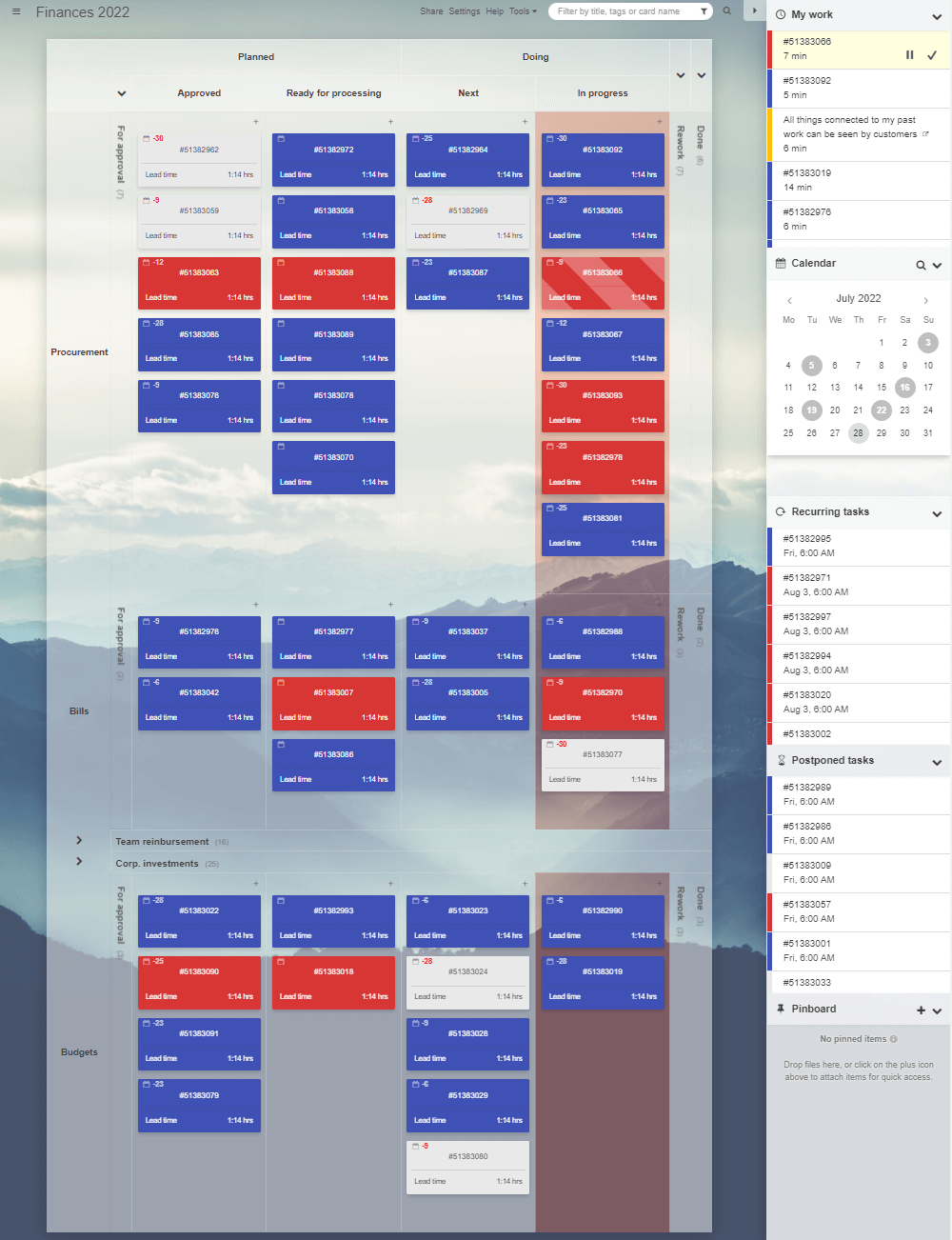
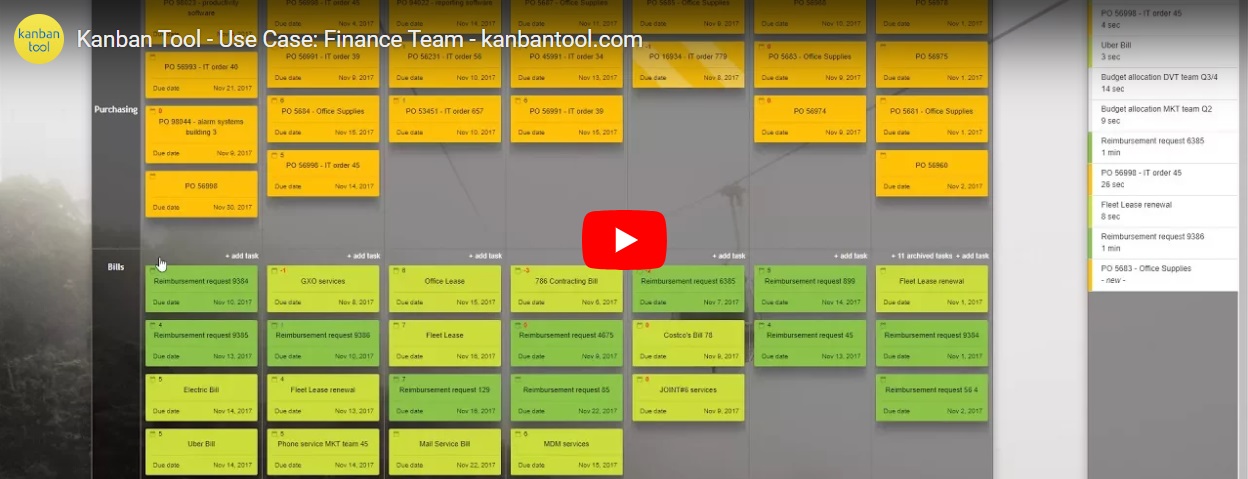
6. Media production
Teams focused on media production, be that visuals, text, or interactive media, are probably the last team to need convincing of the benefits of using visual tools. Careful observers and visual trigger connoisseurs such as media creators will immediately see the help that collapsible Kanban boards with swimlanes offer. Kanban cards will not just hold all their attachments but also display them on closed cards for quicker communication.
And while the configuration can take many forms to meet a specific process, a workable example could look like this, with a separate swimlane for each project:
- Budget
- Script/Sketch
- Pre-Production
- Buffer
- Doing
- Production
- Buffer
- Doing
- Post-Production
- Buffer
- Doing
- Delivery
- Marketing
- Finished
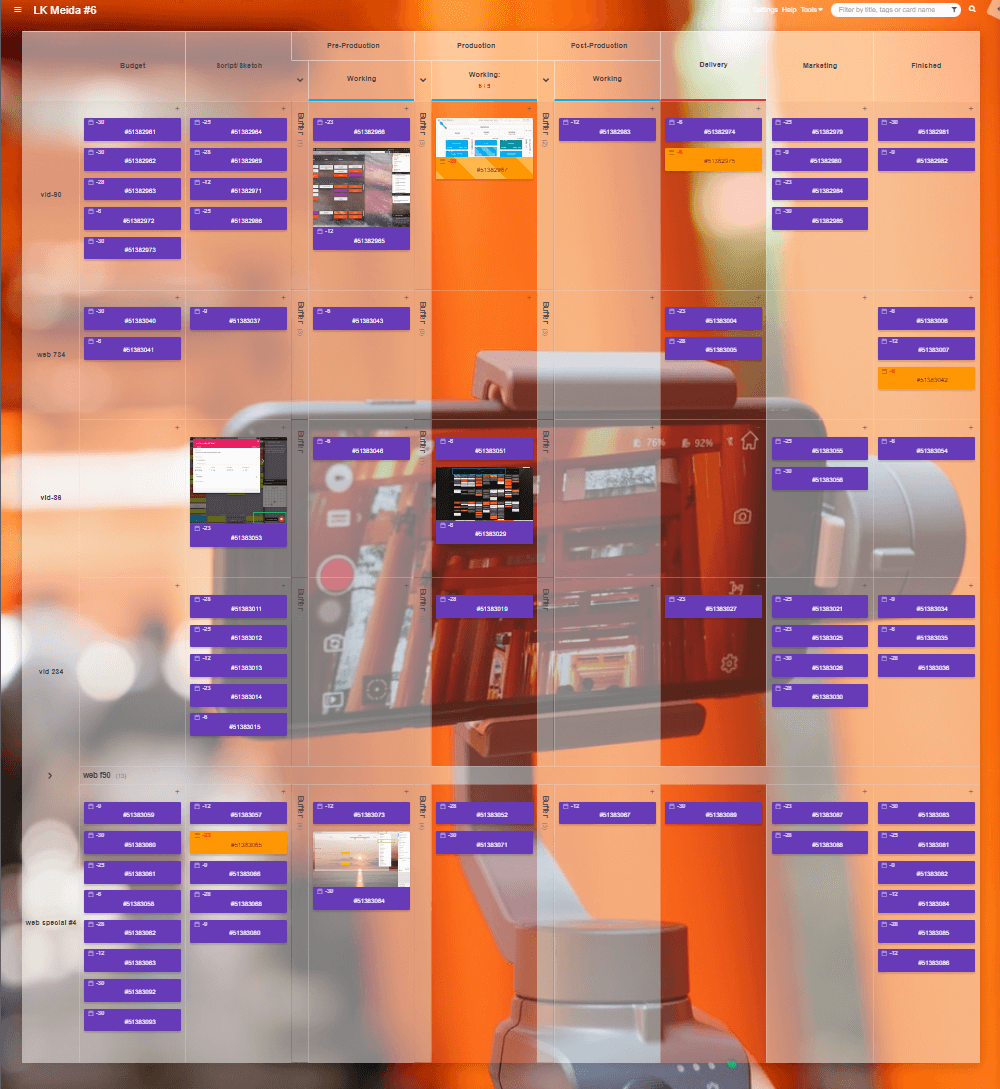
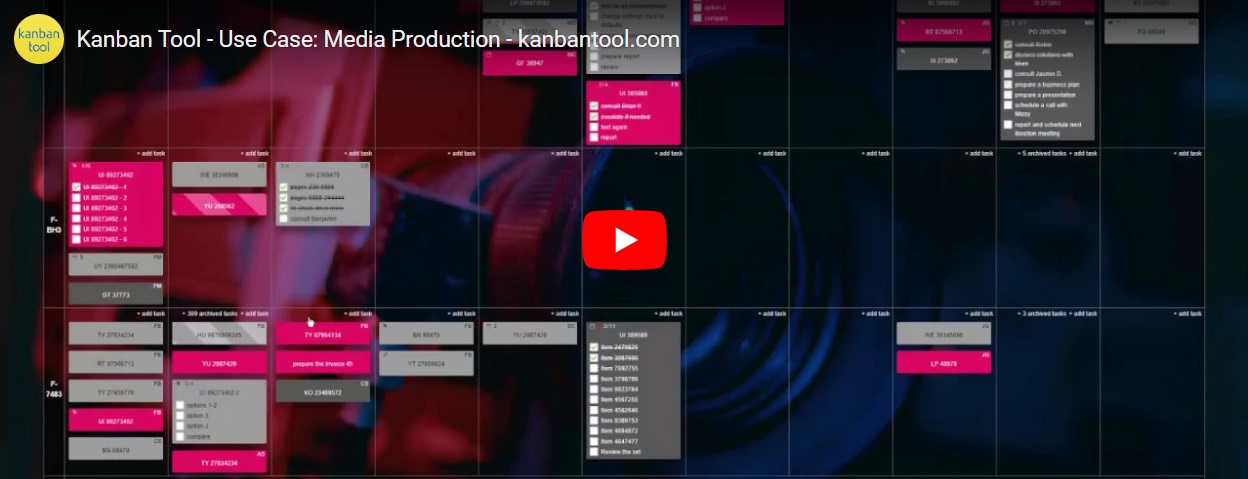
7. Agile marketing
To organize an efficient Agile marketing workflow, it will be best to integrate your various performance monitoring service alerts into the board. For instance, when SEO opportunities are detected, they can be turned into tasks on your board, letting you make the most of the chance as soon as possible.
Furthermore, each of your planned campaigns can be set up and visualized with task templates, having pre-set standard steps ready for you. We'd recommend keeping one row per campaign or for each product if the team works on marketing more than one.
A simple marketing workflow may follow this schema:
- Alerts
- Backlog
- Scheduled work
- This week
- Today
- Doing
- Monitoring
- Done
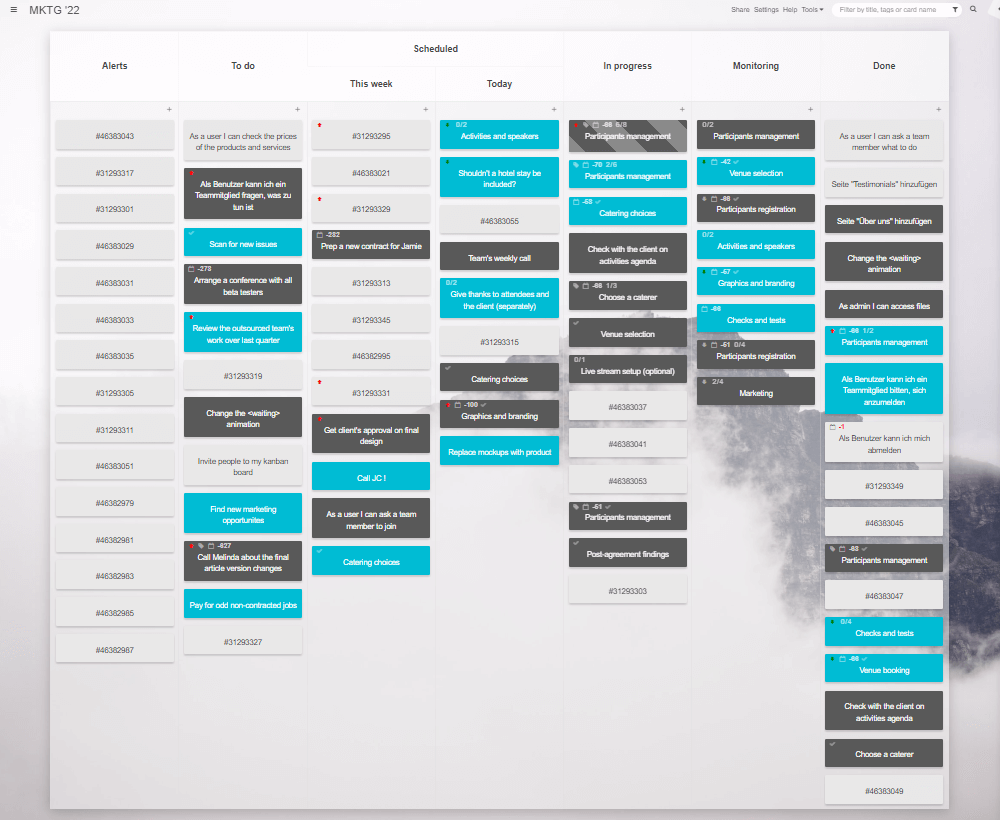
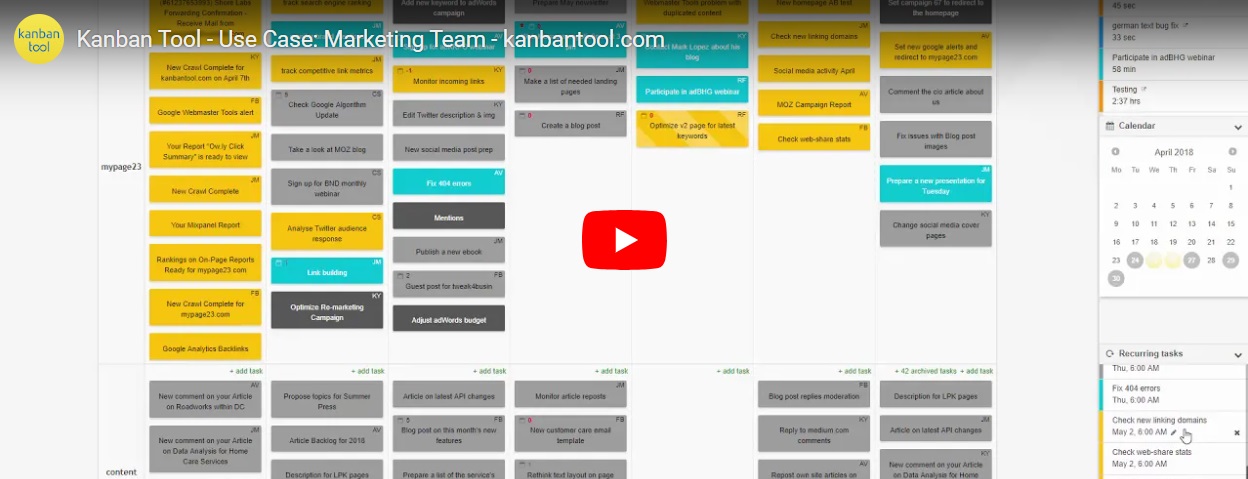
8. Ideas backlog
It's one of the workflows that places the least number of limitations on you. It's up to you to decide how to define the stages. The advantage of keeping a board like this for a company, a department, or just for your role at the firm is that it frees you from remembering the momentary ideas and inspires you to note down any thoughts you come across when speaking with clients or other team members. In other words, the ideas board can be what you fall back on when your boss comes to ask about your thoughts on what you could bring to the table.
An example of such workflow may look like this:
- Unverified
- Presented to others
- Postponed for the future
- Verified
- Ready for detailed planning
- Turned to projects
- Dropped
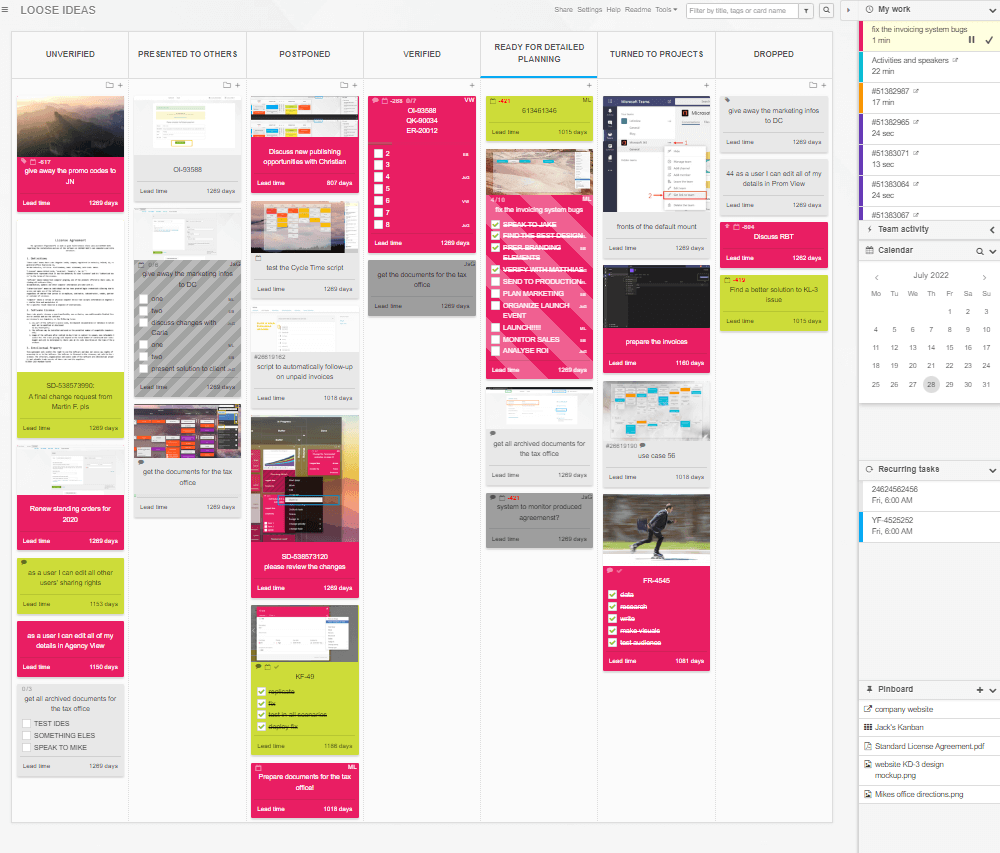
You may find the below tips for efficient backlog management helpful in organizing your ideas and loose plans:
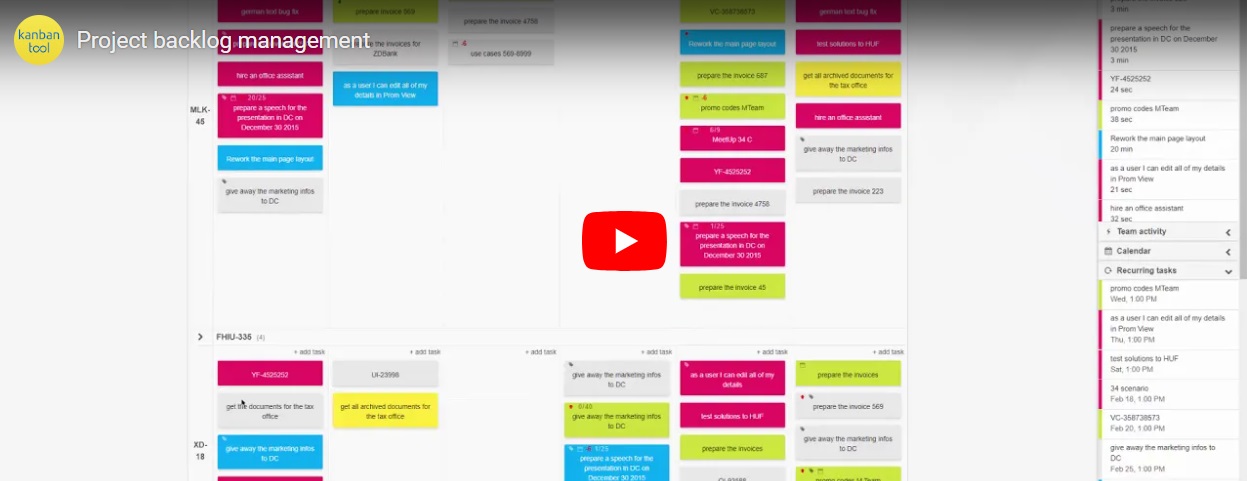
9. Event planning
Event planning is based on intricate scheduling and making everything come together at the right time and place. It's not easy, but Kanban can help. Whether you involve the client in the process and to what extent is your call, but if you do or don't, the visual nature of a Kanban workflow will be dead easy for them to understand.
We strongly recommend using Task Reminders for those elements of work that you absolutely cannot miss. Pour all the work elements for a given event into the board, and let the board keep tabs on all dates for you.
If you're a professional event planner, you can reuse the same board templates - with pre-set tasks - for all events of the same type, saving time and effort.
A board on which you'd keep an eye on several events at once - placed in swimlanes - might follow this flow:
- Ideas to confirm
- To do
- In progress
- For client approval
- Completed
- To do on the day
- Feedback
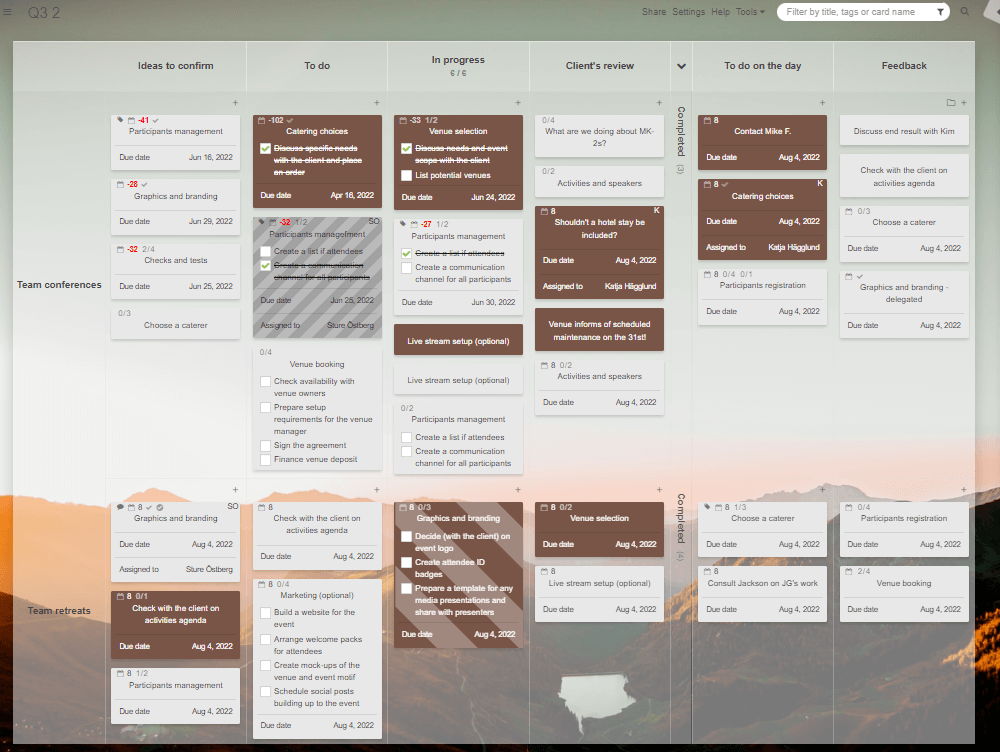
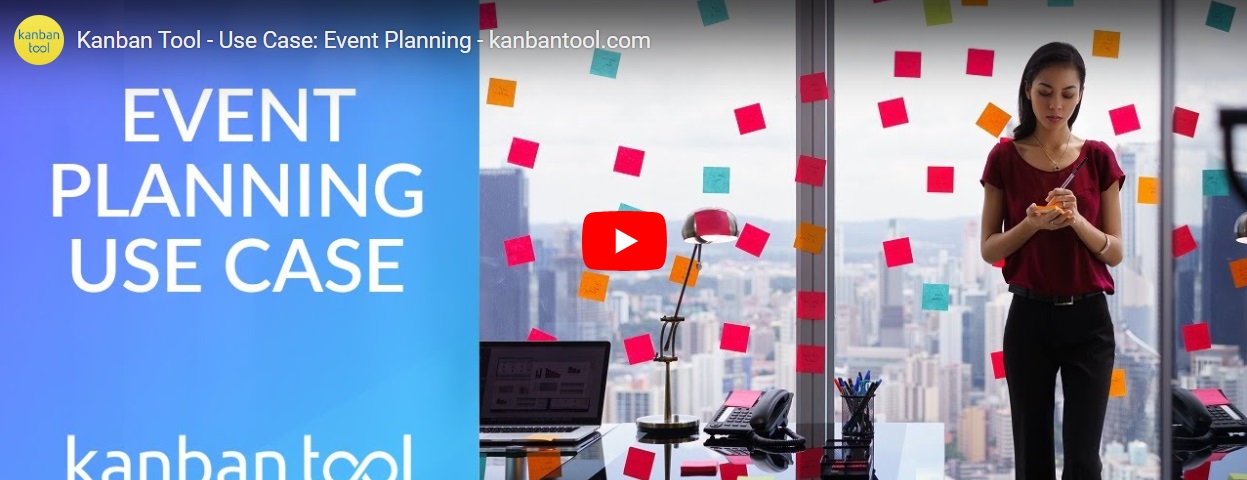
10. Construction work
Construction work management and planning differ significantly from the more typical project management. You'd usually be dealing with the crucial issue of syncing the construction work with the delivery of the materials. The problems will likely be unique every time, always specific to each site you manage. But that does not mean Kanban won't help - on the contrary. We recommend maintaining separate boards - one for material orders and distribution to sites and one for each construction site's management.
This approach will help you efficiently place orders and match their frequency to the pace of all your managed sites.
For instance, a material ordering board's flow could look like this:
- Requirements
- Requirements verified
- To order
- Waiting
- Working
- Ordering
- In progress
- Pending approval
- Monitoring
- Arrived
- To verify
- Verified
- Stock
- Allocated
- Overflow
And your swimlanes could represent each project's requirements and material allocations.
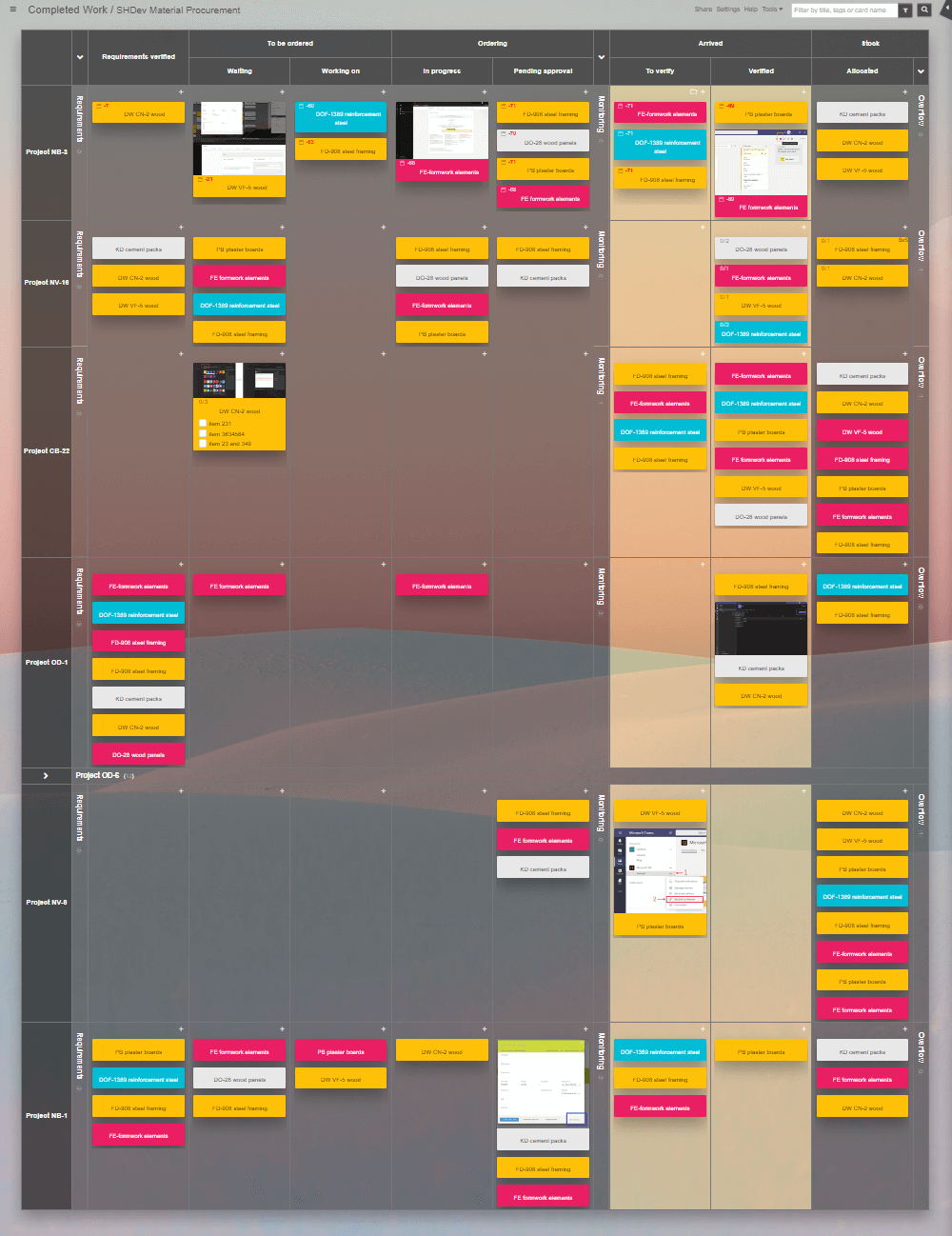
Then, your site's progress management boards could follow this simple pattern:
- Backlog
- Next 6-weeks schedule
- To do
- Started
- Paused
- Rework
- Finished
- Signed-off
- External control
- Done
It may also pay to use different swimlanes to manage planned, unplanned, and safety control-related tasks, achieving higher clarity.
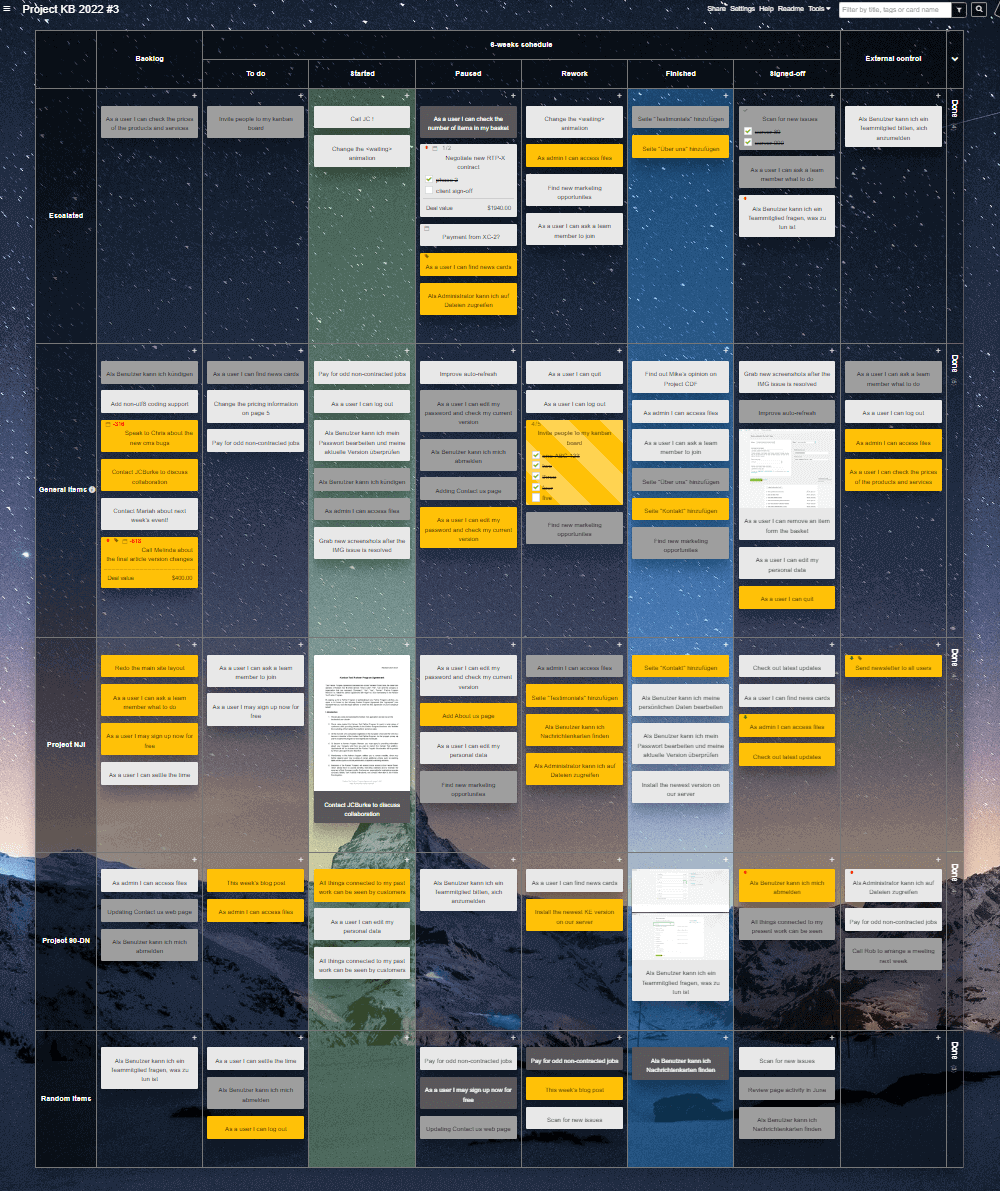
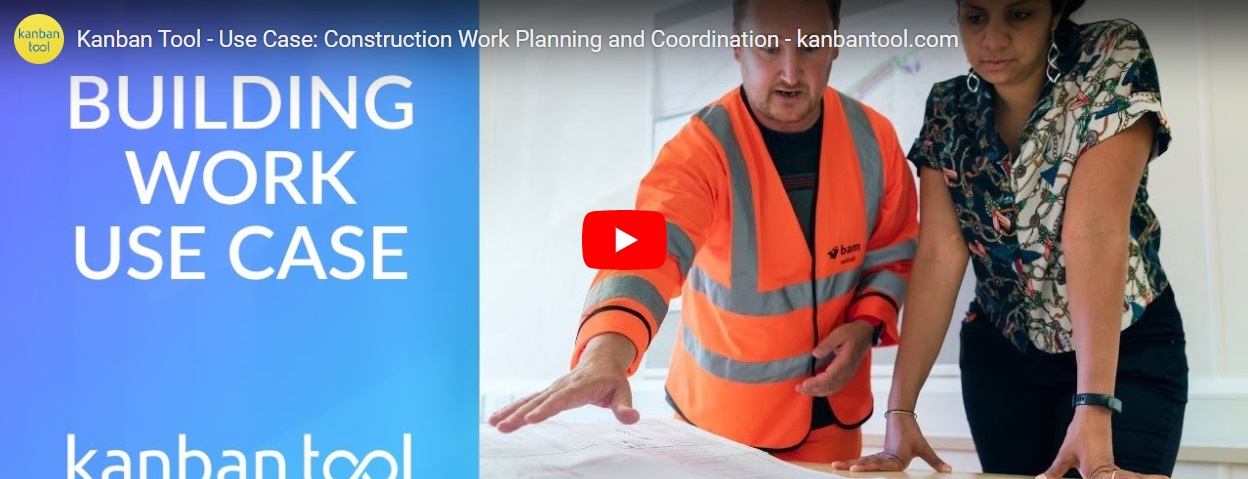
11. Customer support
This work is probably the most common for Kanban boards, following software and product development management. It's just too easy to lose track of customer requests and feedback to not manage it in a comprehensive, visual, and partly automated system.
A popular way to start a board is to forward all incoming requests onto it as tasks. You could then have the on-duty manager assign different issues to the team member best suited to solve them well and fast. If specific requests need urgent attention, they should be marked in a different color or placed in an urgent attention swimlane. From there on, each team member would know which items to tackle and could set a date for when to follow up with the request sender, bringing the much-needed order to the chaos that customer support can be.
A simple yet immediately visually informative workflow could look like so:
- Backlog
- In Progress
- Next
- Doing
- Pending sender reply
- Expedited to experts
- Next
- Resolved
- Finished
- Feedback
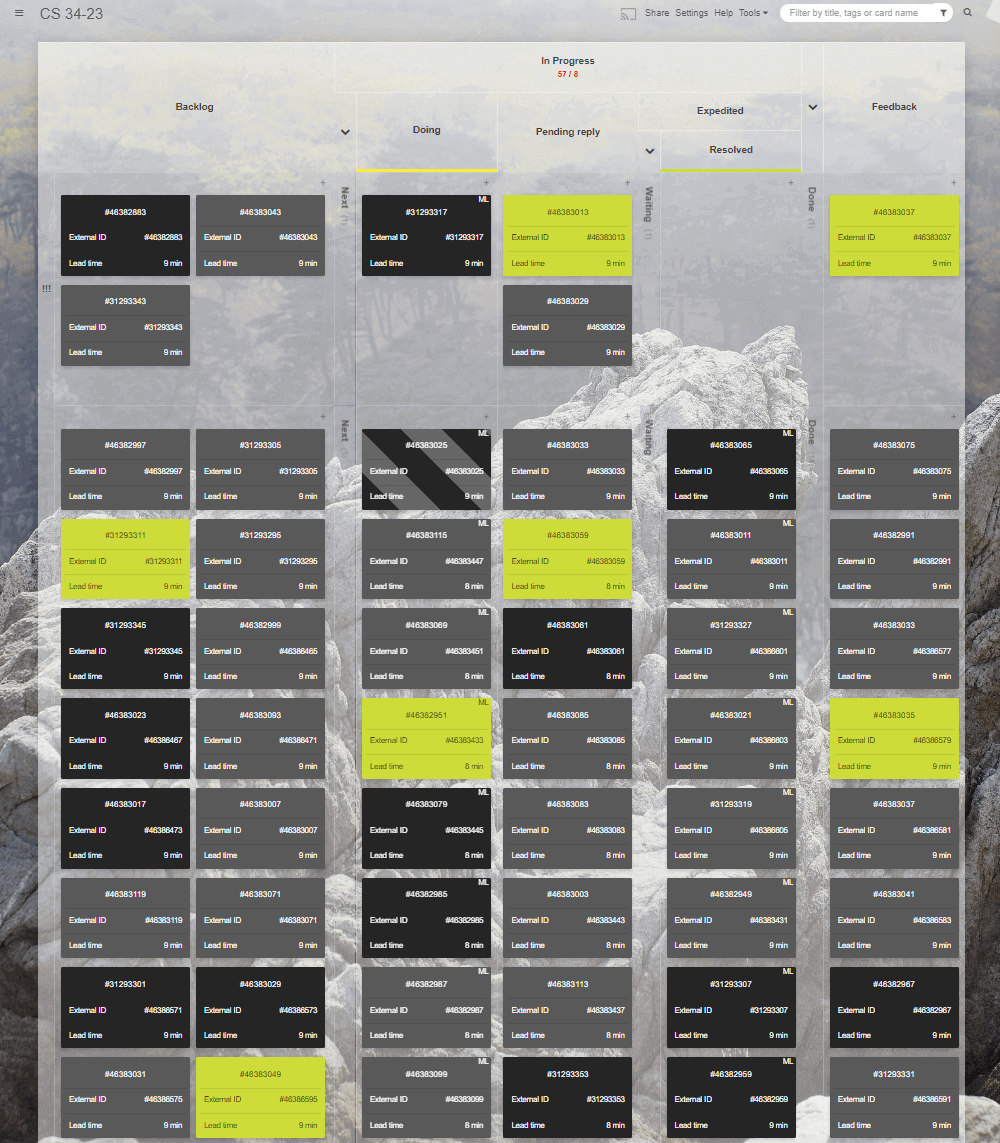
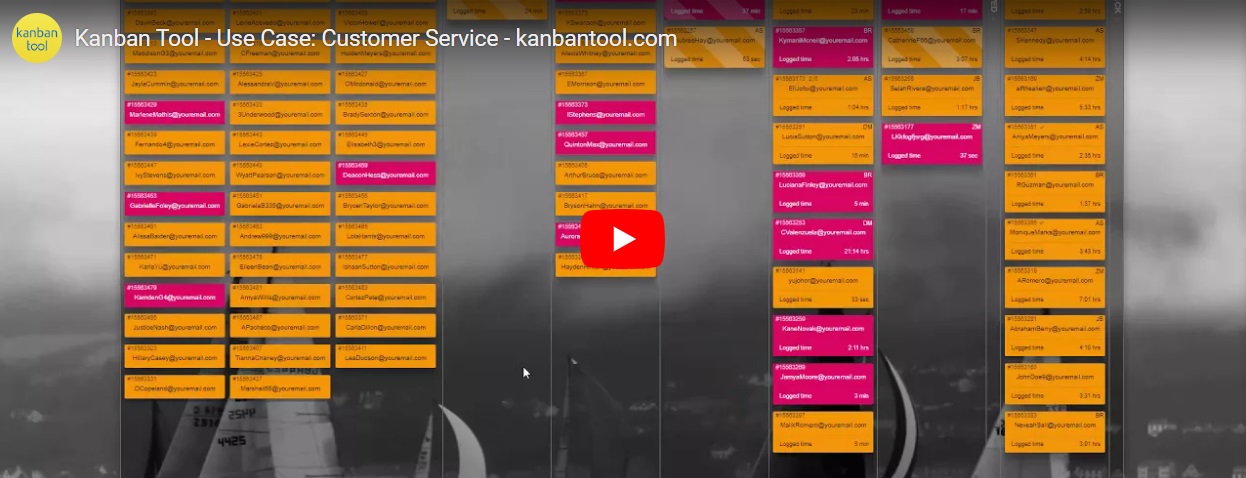
12. Personal Kanban
Personal Kanban is your to-do list turned into a Kanban planner. Rather than bulking all tasks on a one-list page and crossing them out as you go, Kanban encourages you to visualize the waiting jobs as separate from those you've already started. It lets you move the done work to the rightmost column with great ease and satisfaction!
The approach gives a better overview of your wishes and chores, letting you plan better. E.g., you could make it a rule to complete at least two small tasks each day and have a reminder of this sent to your email as encouragement.
You could also extend the board to cover each of these areas in one swimlane: your personal goals, house chores, family activities, vacations, reading lists, places to see, friends to meet up with, not to mention - your work tasks - if your job does not offer a handy planning tool of some kind.
The simplest Personal Kanban would be as simple as:
- To do
- Doing
- Done
Feel free to maintain different swimlanes, or card colors, for the various topics, and areas of activity for higher clarity.
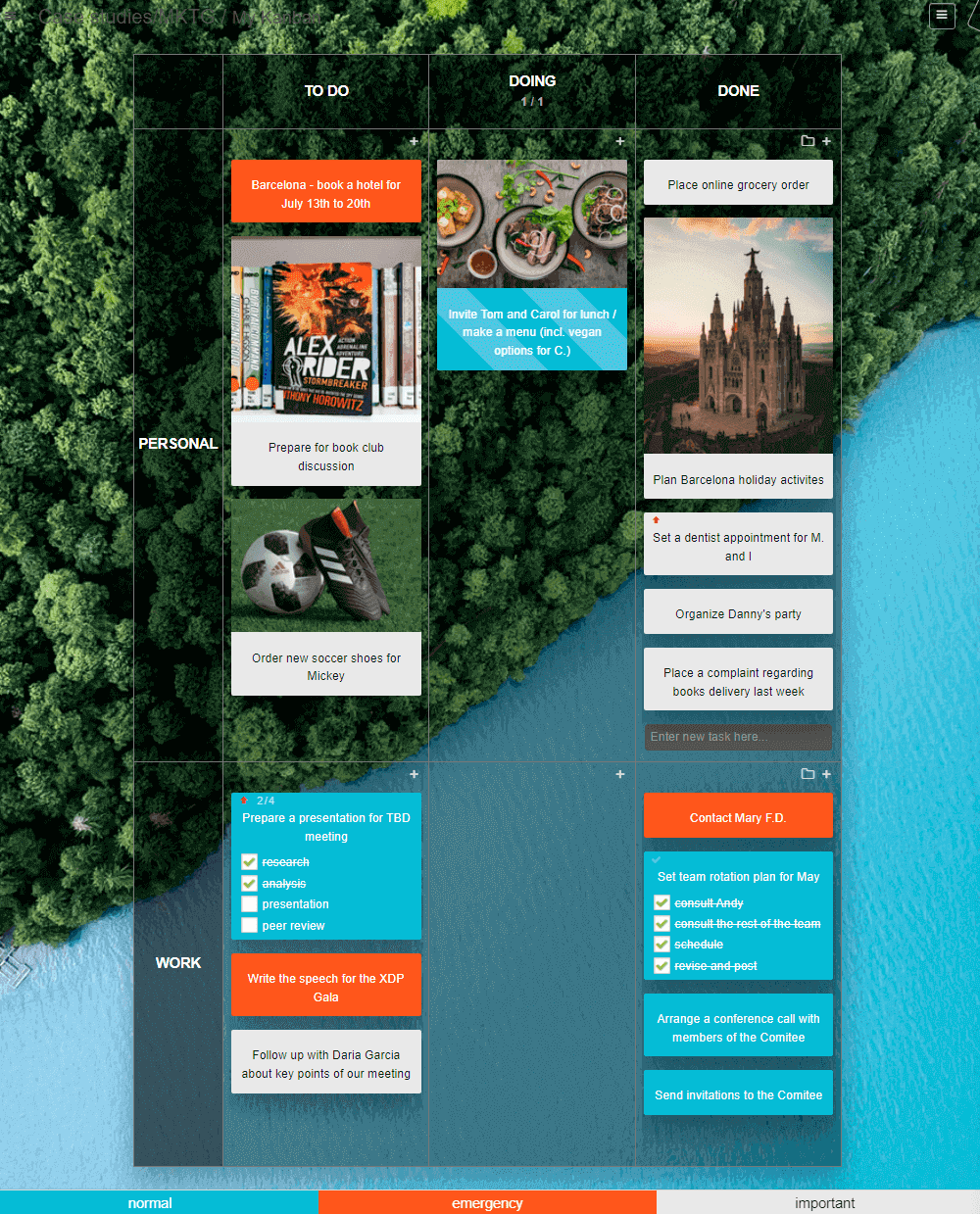
13. Small production line
With Kanban's roots in stock management in manufacturing scenarios, it's only natural to apply the method's digital form to production. The best way to do it is by using WIP limits to improve the process throughput and stock up on parts at exact times. A board split into each manufacturing step would visualize all the items at each stage, showing what's started and what's blocked while - at the same time - informing of parts usage, letting the ordering manager fit the planned orders with the process' current needs.
A bespoke light fixtures manufacturing process might follow these stages:
- Specs ready
- Die bond
- Wire bond
- Dispense
- Cut out
- Drivers install
- Test & pack
- Done
Each stage, except for the first and last, is split into "Doing" and "Ready", effectively separating the ongoing and completed activities.
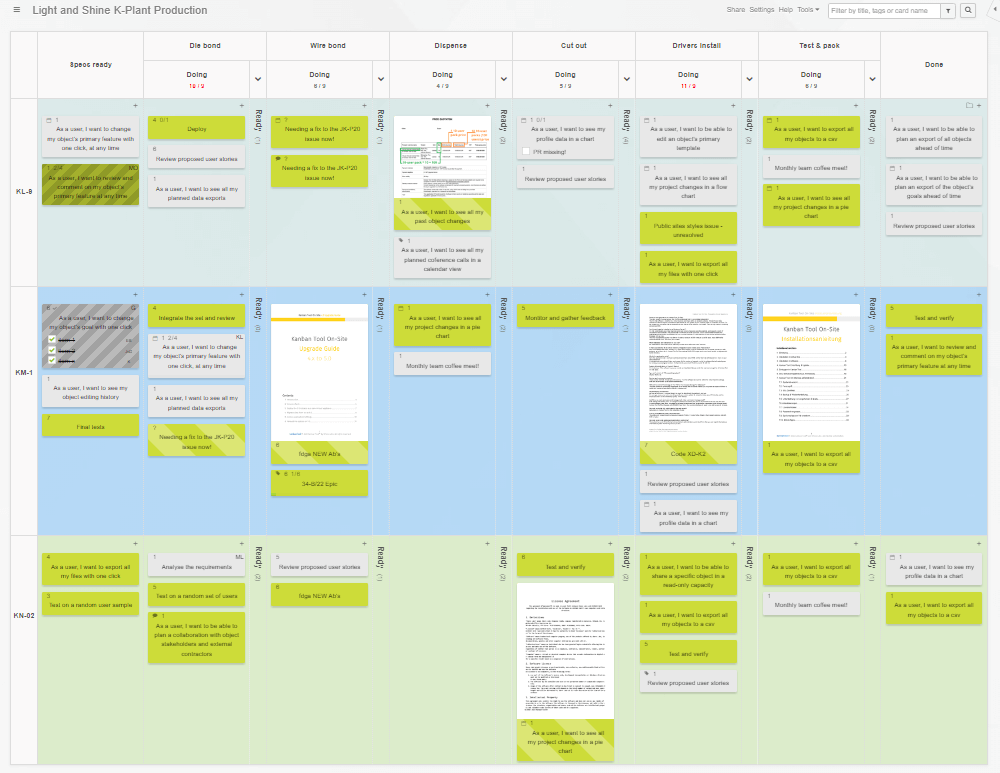

Trust us - this is just the tip of the iceberg where custom Kanban board workflows are concerned! The boards can help manage and illustrate virtually any process that follows a set order of steps. Of course, the above are all just examples. A Kanban Tool board layout can take any shape and be altered at any point during your project. We encourage modifications of the flow for constant process improvement!
Sign up for a 14-day free trial
to test all the features.
Sign up now and see how we can help
your organization deliver exceptional results.